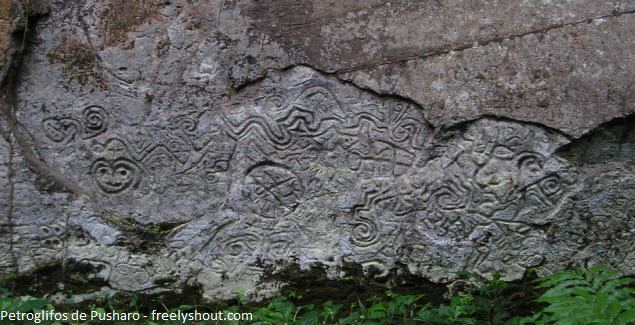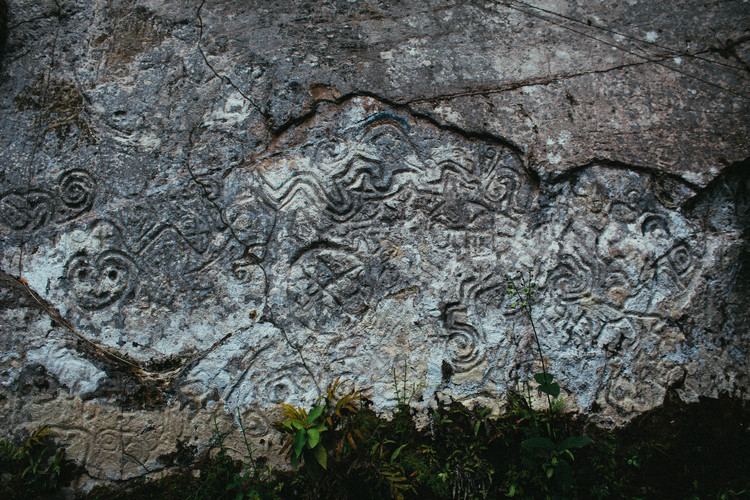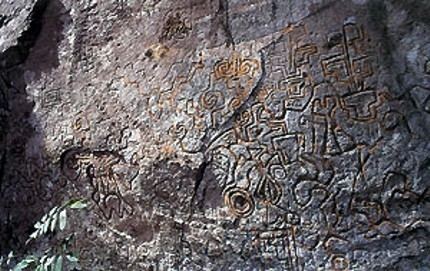 | ||
The Petroglyphs of Pusharo constitute a unique and extensive ancient rock art site in southeast Peru's Manú National Park, a jungled expanse that still contains unexplored and little known areas, and for which an official government permit is required for entry.
Contents

Discovery

It appears that a rubber tapper on an Indian raid in 1909 may have been the first non-native to encounter the petroglyphs, with the next visit having been made by a Dominican missionary, Vicente Cenitagoya, in 1921. A smattering of adventurers began to arrive at the site in the 1950s, and in 1969 the site was visited by the Peruvian physician/explorer Dr. Carlos Neuenschwander Landa (who would return in later years accompanied by Peruvian explorer, Sr. Santiago Yábar). In 1970 another peripatetic Dominican, Padre Adolfo Torrealba, reached the site, followed by Japanese explorer Yoshiharo Sekino, and the French-Peruvian explorers Herbert and Nicole Cartagena in 1978. Two years later came the Peruvian archaeologist Federico Kauffmann Doig. In 1991 the party of North American explorer Gregory Deyermenjian, including Peruvian explorer Paulino Mamani and the previously mentioned Santiago Yábar, arrived at Pusharo. The site has since been visited and studied by rock art scholar Rainer Hostnig.

In 2008, it was the subject of a documentary-trek filmed for the BBC television series Extreme Dreams presented by Ben Fogle.
Description

The site is made up of an array of deeply incised rock carvings that cover up to a height of 9 feet, a perpendicular rock face that is over 100 feet long and 75 feet high. Its location is on the south shore of the Río Palatoa (designated on some maps at this location as the Porotoa, and known by others as the Palatoa Chico). The petroglyphs are thought by some researchers to be purely pan-Amazonian in origin, and of mistico-religious or shamanic significance to those Amerindians of past centuries who must have been their creators. Others believe that there is an Incan component that is now coming to light, and that the glyphs constitute parts of a map. Definitive word on the meaning of Pusharo's glyphs must wait until further research is conducted and completed. The glyphs contain elements such as heart-shaped faces, some with double borders, spirals, zigzags, suns, "curlicue X's" and others that defy verbal description.

